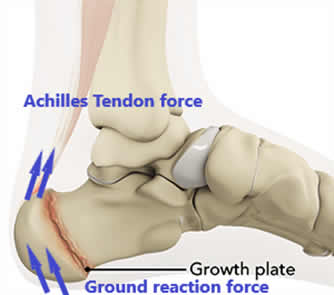Q: What is the difference between Severs and plantar fasciitis?
A: The primary differences between Severs Disease and Plantar Fasciitis include the age of those affected, the location of the pain, and the underlying causes. Severs Disease is typically observed in children and adolescents, while Plantar Fasciitis is more common in adults. Severs Disease causes pain at the back or sides of the heel due to growth plate inflammation, while Plantar Fasciitis causes pain at the bottom of the heel due to plantar fascia inflammation.
Q: How do I know if I have a heel spur or plantar fasciitis?
A: Heel spurs are bony growths on the underside of the heel bone, and while they can cause pain, they often exist without symptoms. Plantar Fasciitis pain tends to be worse in the morning or after periods of inactivity, whereas heel spur pain is usually constant and may feel like a sharp poking sensation. A podiatrist can accurately diagnose the condition through physical examination, patient history, and imaging studies.
Q: What can be mistaken for Sever’s disease?
A: Conditions that can be mistaken for Sever’s disease include Achilles tendonitis, stress fractures, and other heel bone injuries. A thorough examination by a podiatrist is necessary to differentiate between these conditions and provide an accurate diagnosis.
Q: What is the difference between Sever’s disease and Achilles tendonitis?
A: Sever’s disease is an inflammation of the growth plate in the heel, while Achilles tendonitis is an inflammation of the Achilles tendon, which connects the calf muscles to the heel bone. Although both conditions cause heel pain, they have different underlying causes and typically affect different age groups.
Q: What are 2 symptoms of plantar fasciitis?
A: Two key symptoms of plantar fasciitis are pain at the bottom of the heel and stiffness in the foot, especially upon waking up or after periods of inactivity.
Q: What are 3 treatments for plantar fasciitis?
A: Three common treatments for plantar fasciitis include:
Rest and reduced activity
Ice application Stretching exercises and physical therapy
Q: What is the squeeze test for Sever’s disease?
A: The squeeze test is a diagnostic tool used by podiatrists to identify Sever’s disease. It involves gently squeezing both sides of the heel, where the growth plate is located. If the child experiences pain or discomfort during this test, it is considered a positive result, indicating the presence of Sever’s disease.
Q: What is a positive squeeze test for Sever’s disease?
A: A positive squeeze test for Sever’s disease occurs when the child experiences pain or discomfort while the podiatrist gently squeezes both sides of the heel. This pain indicates inflammation of the growth plate and is suggestive of Sever’s disease.
Q: Can my child still play sports with Sever’s disease?
A: While it is possible for a child with Sever’s disease to continue participating in sports, it is crucial to manage their activity level and monitor their pain. In some cases, it may be necessary to reduce or temporarily stop certain activities that exacerbate heel pain. Consulting with a podiatrist can help determine the appropriate course of action, which may include modifications to footwear, orthotics, or participation in low-impact activities until the condition improves.



